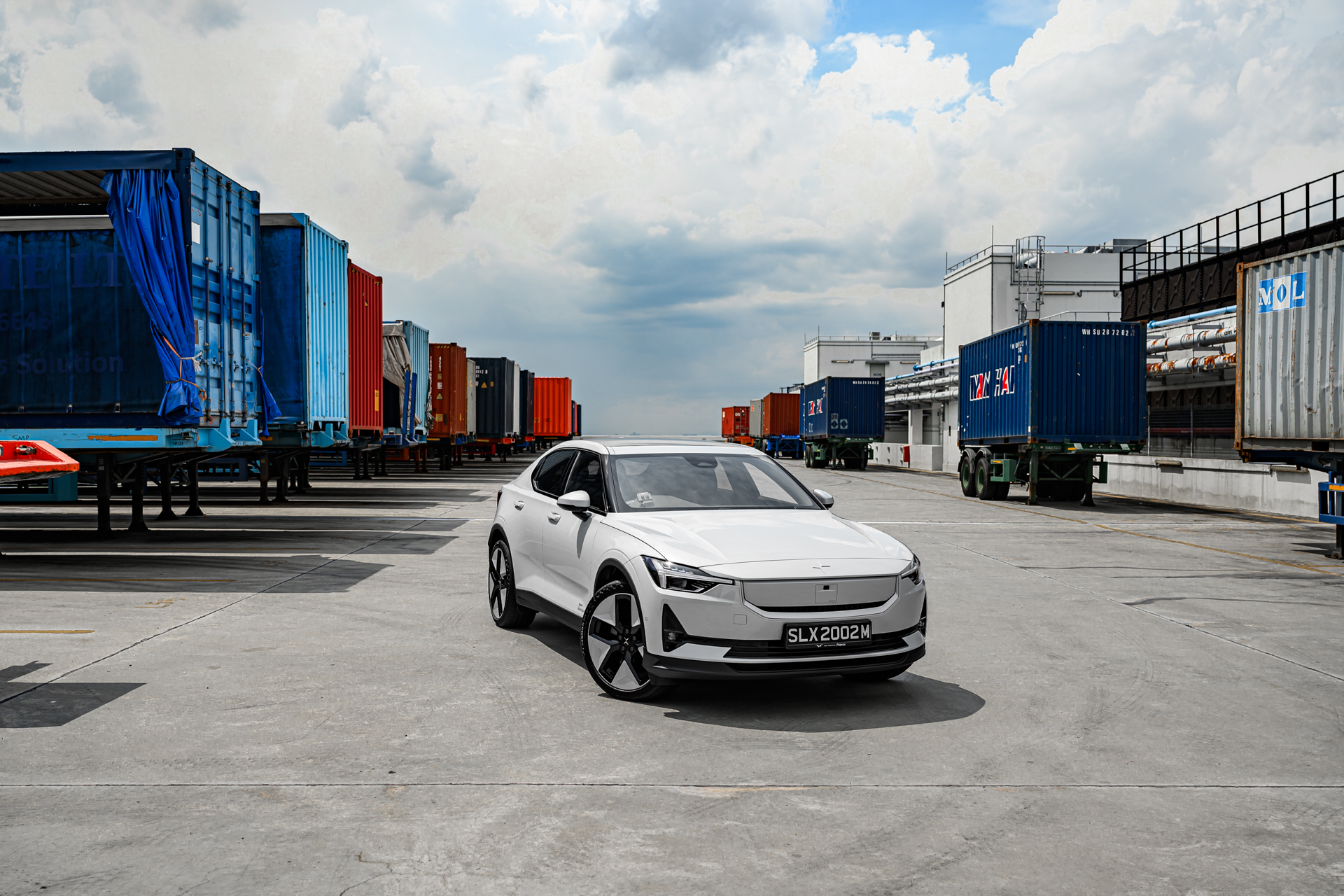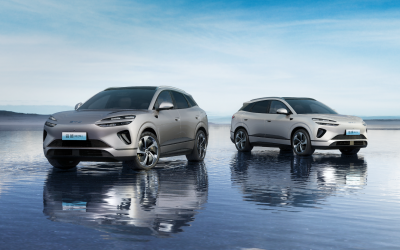The Swedes really know how to design a clean and attractive aesthetic, and it shows in the Polestar 2.
This is my second encounter with the Polestar 2, this time in Standard range Single motor (SRSM) guise, in just over a year. For this 2024 model, Polestar has done something truly spectacular.
Where the previous version was front-wheel drive, this 2024 model switches over to rear-wheel drive. While this may not seem significant to many, read on to find out why automotive enthusiasts around you may be salivating at this change.
For some background information, Polestar was initially the performance arm of Volvo. Later, it was spun off into its own entity to build electric vehicles or EVs based on current Volvos in Polestar’s own flavour.
Therefore, it comes as no surprise that two of the Polestar 2’s competitors are Volvo’s XC40 Electric and C40 Electric, with all three vehicles sharing the same platform.
Also found in the same price bracket is the recently-reviewed BMW iX1 eDrive20 xLine, but the Polestar 2 packs significantly more punch.
Clean and Attractive
The most obvious change in the front end is the panel that replaces the front grille, presumably for aerodynamic-efficiency improvement.

Combined with the headlights with Thor’s Hammer daytime running lights (DRLs), the front end now sports a smiling face, the type a shark might give you before chomping down on its human meal. Wholly apropos of the Polestar 2’s performance potential, methinks.
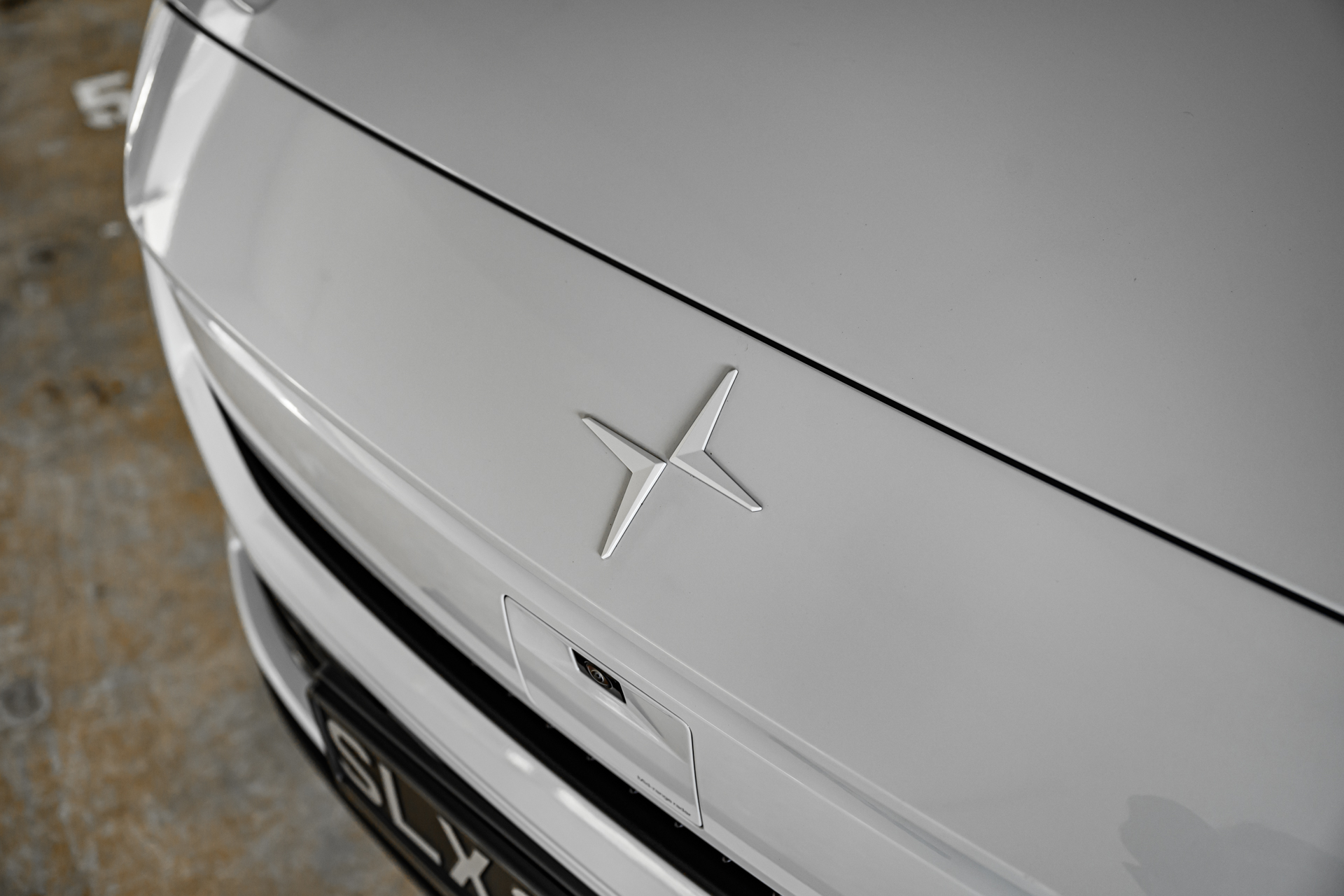
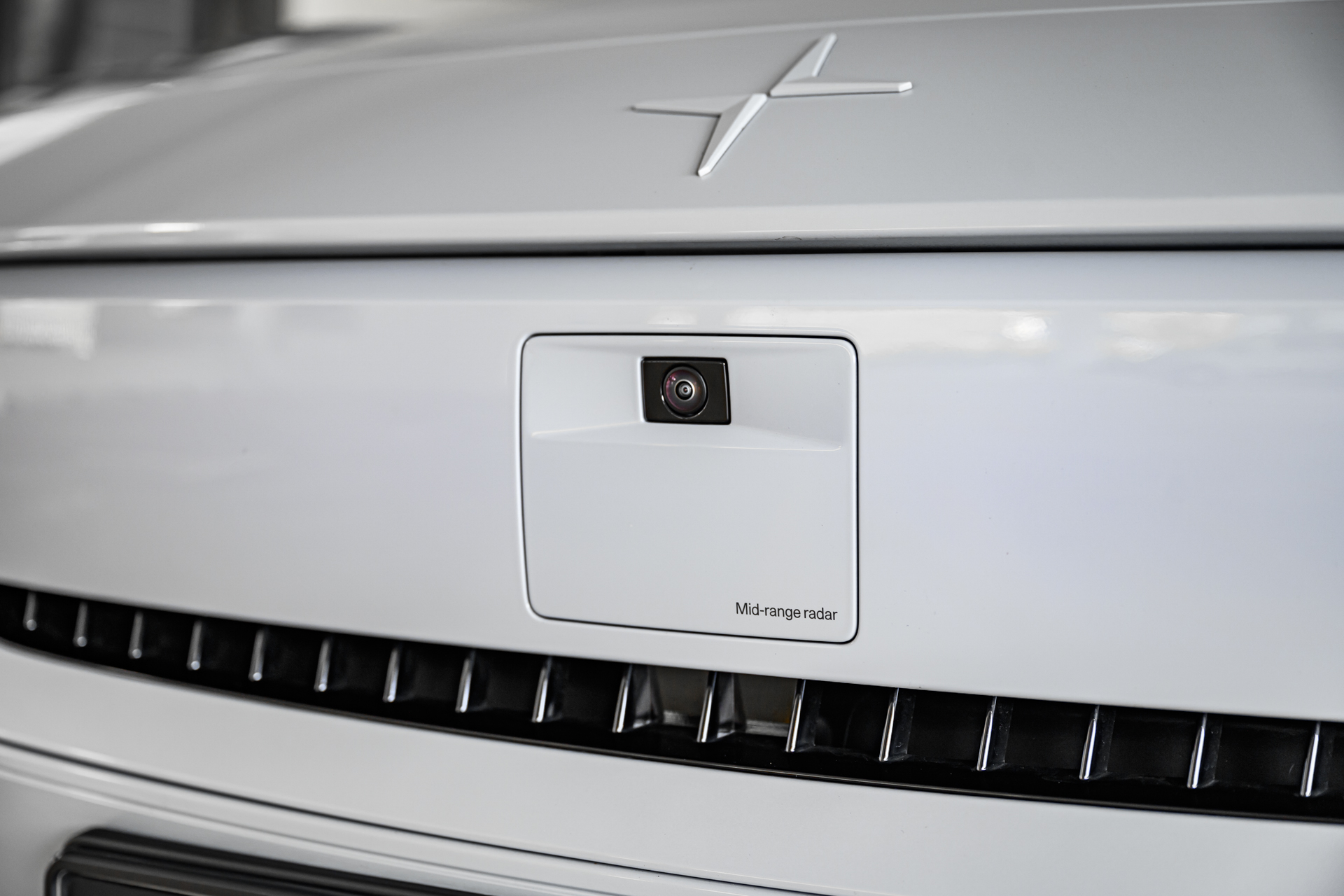

The test car came with optional 20-inch rims wearing 245/40 R20 XL (as in eXtra Load) Continental PremiumContact 6 tyres. They grip well and are pretty quiet and pliant on the move. More on this later.

The frameless wing mirrors continue their tradition here, which is a unique aesthetic touch. They each house a boomerang-shaped blind spot monitoring indicator which glows reddish-orange when there’s traffic beside.
The clean design aesthetic carries on to the rear with those distinctive taillights, and I had the pleasure of seeing them in action on the highway while travelling in an impromptu convoy with another Polestar 2 at night.
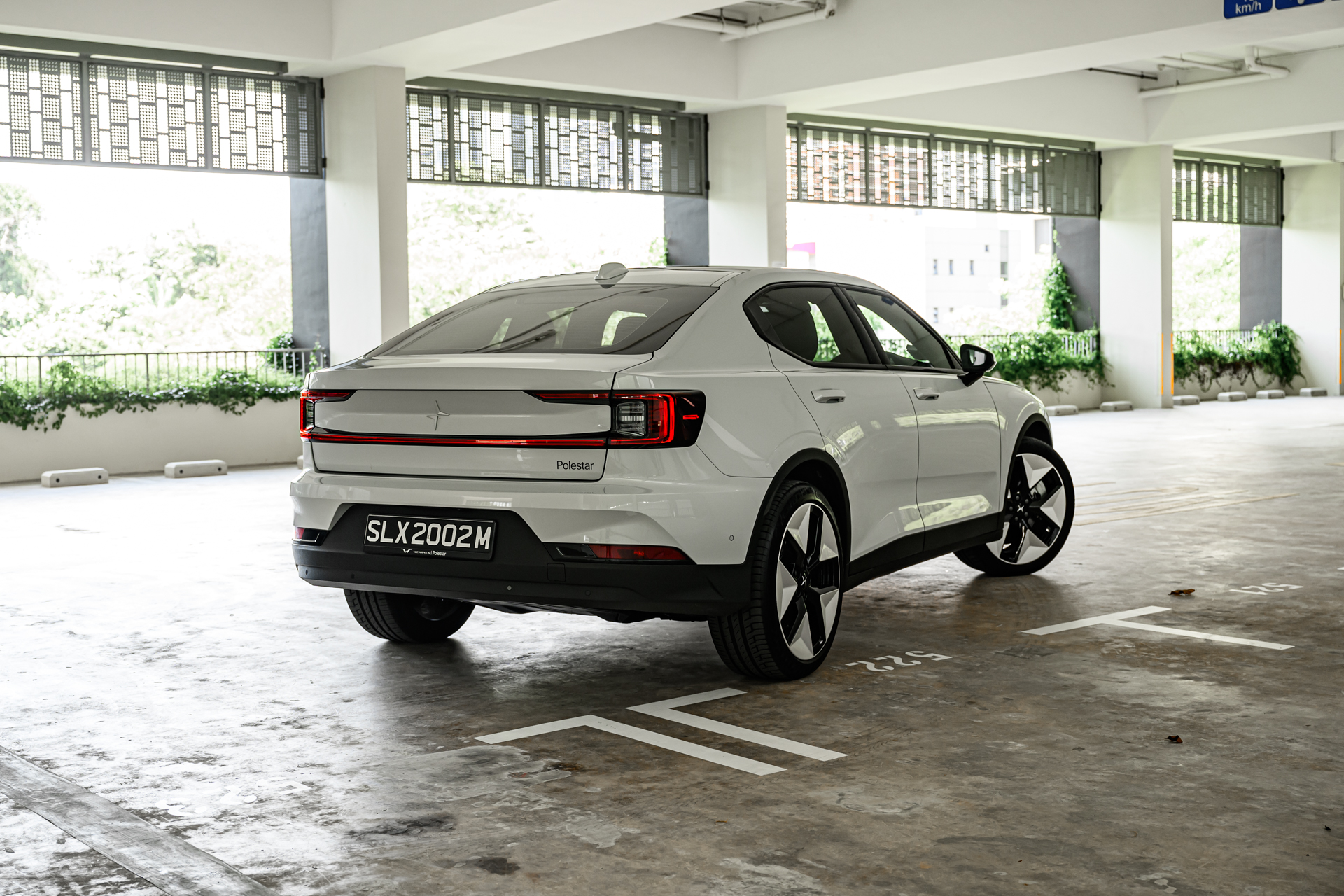
Compact Proportions
Being an EV, there are two storage locations in the Polestar 2. The frunk (front trunk) or froot (front boot) features 41 litres of space, and will likely be used to house the charging cable or a small spit-shine detailing kit.
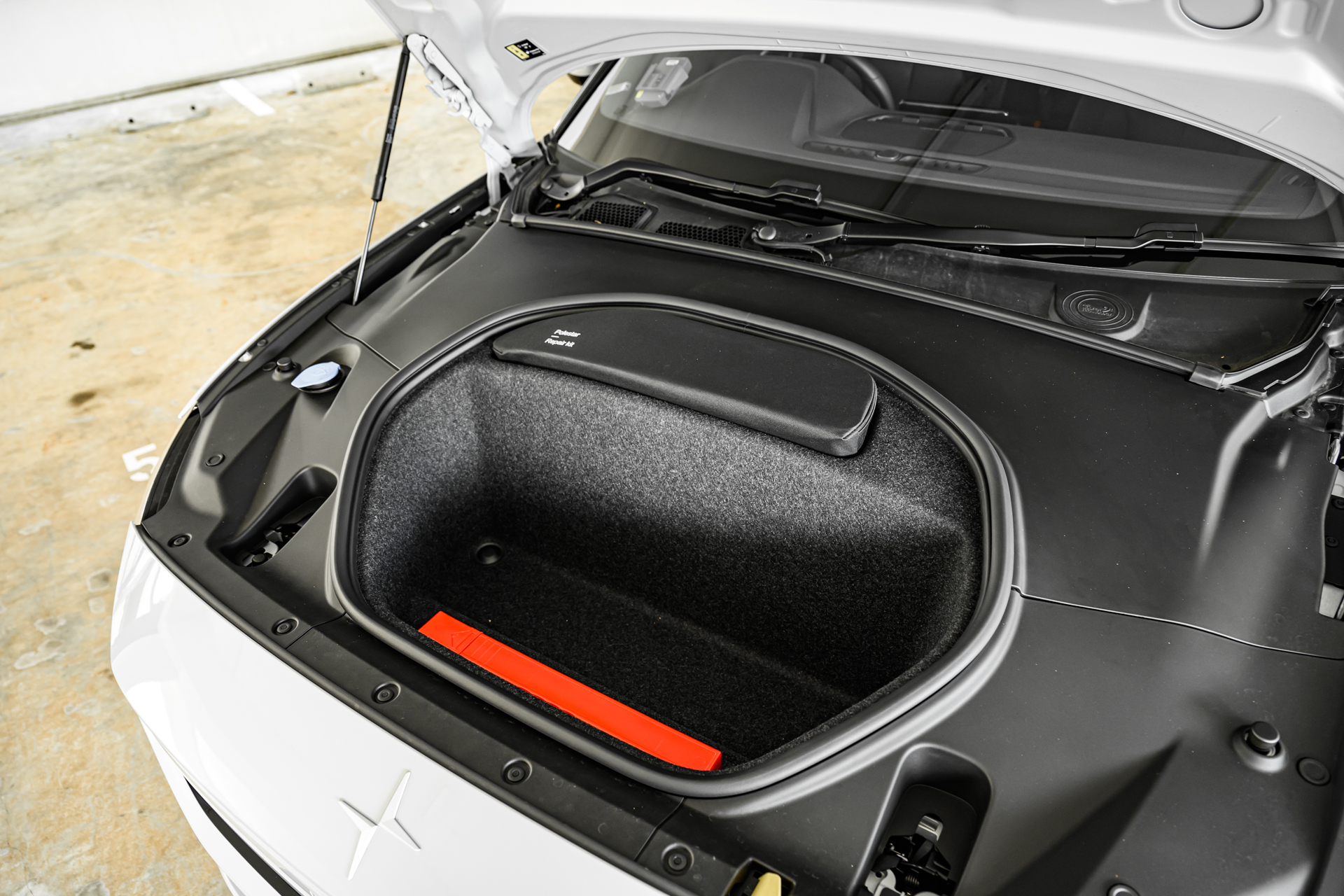
The regular boot features 407 litres of cargo capacity, and dropping the rear seatbacks liberates up to 1097 litres.
These include the underfloor storage. There’s a built-in divider in the boot to keep barang-barang from sliding back and forth, which is useful.

Owing to its compact proportions, the rear legroom is adequate, and I can just about sit behind my own driving position for shorter journeys. Two aircon vents and USB Type-C ports keep rear occupants cool and their mobile devices juiced up. The seats themselves are pretty comfy though.
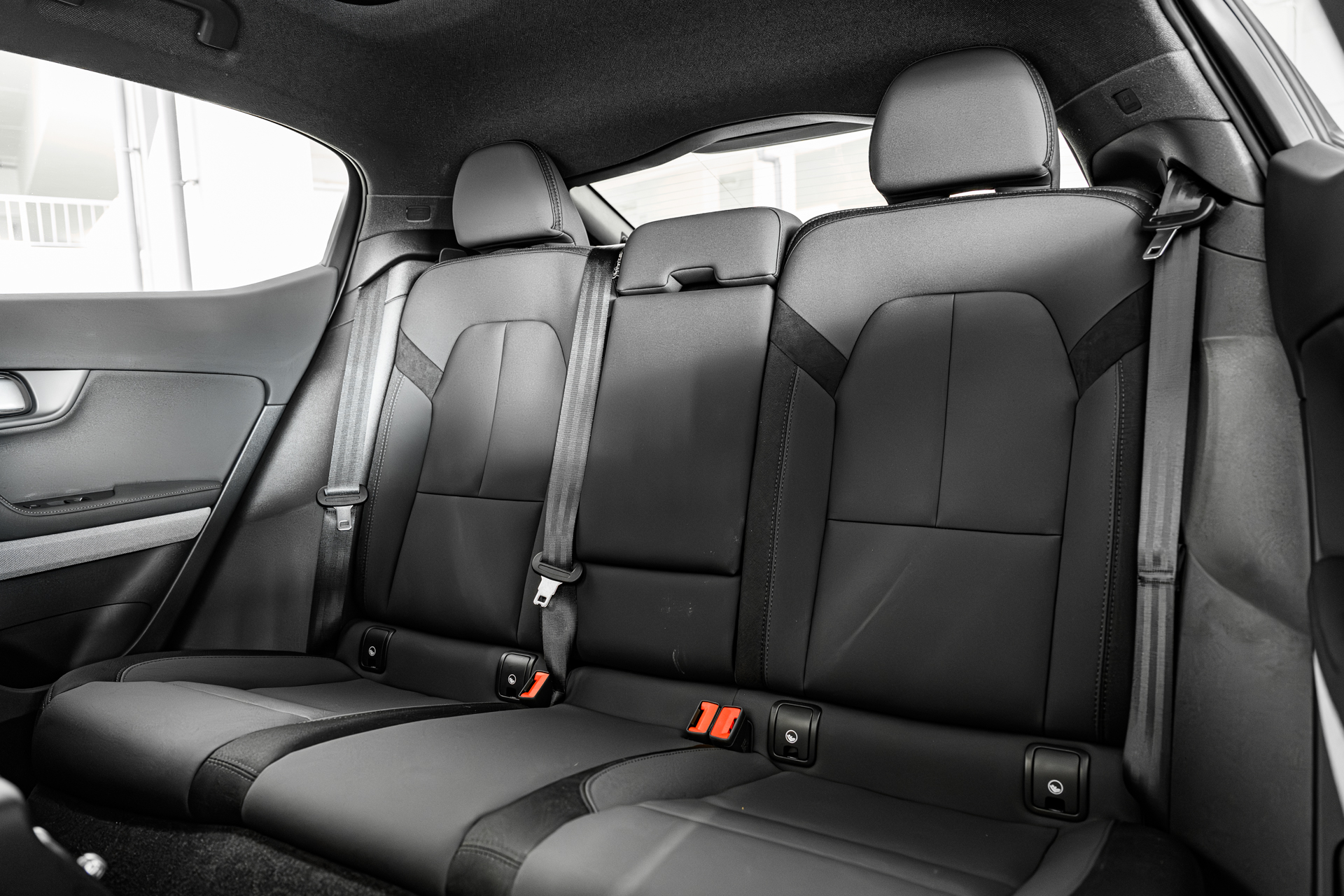

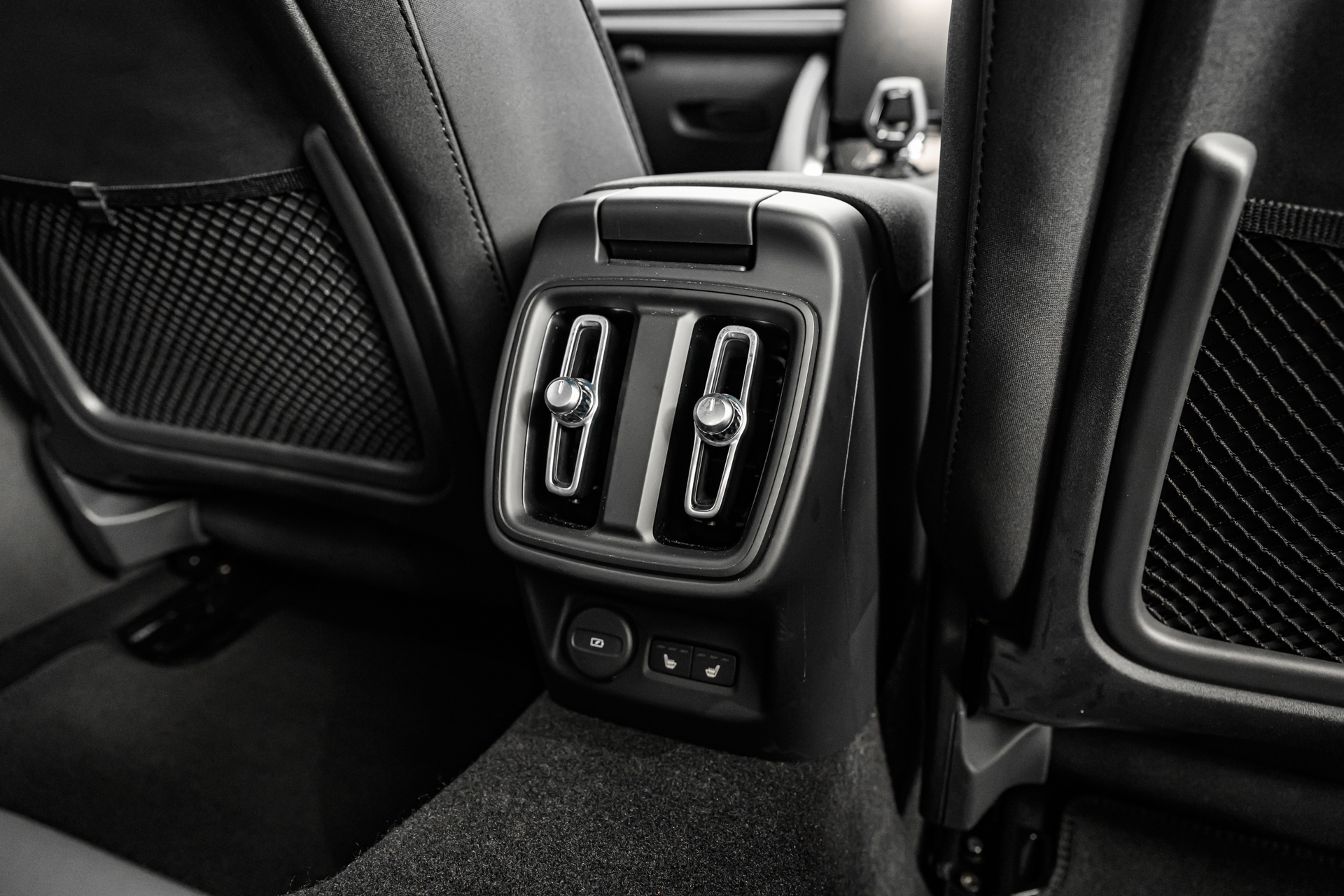
Vegan-friendly WeaveTech fabric features on all the upholstery. Despite being dark-coloured, the interior does not feel cramped owing to the panoramic roof which lets natural light gently stream into the cabin.
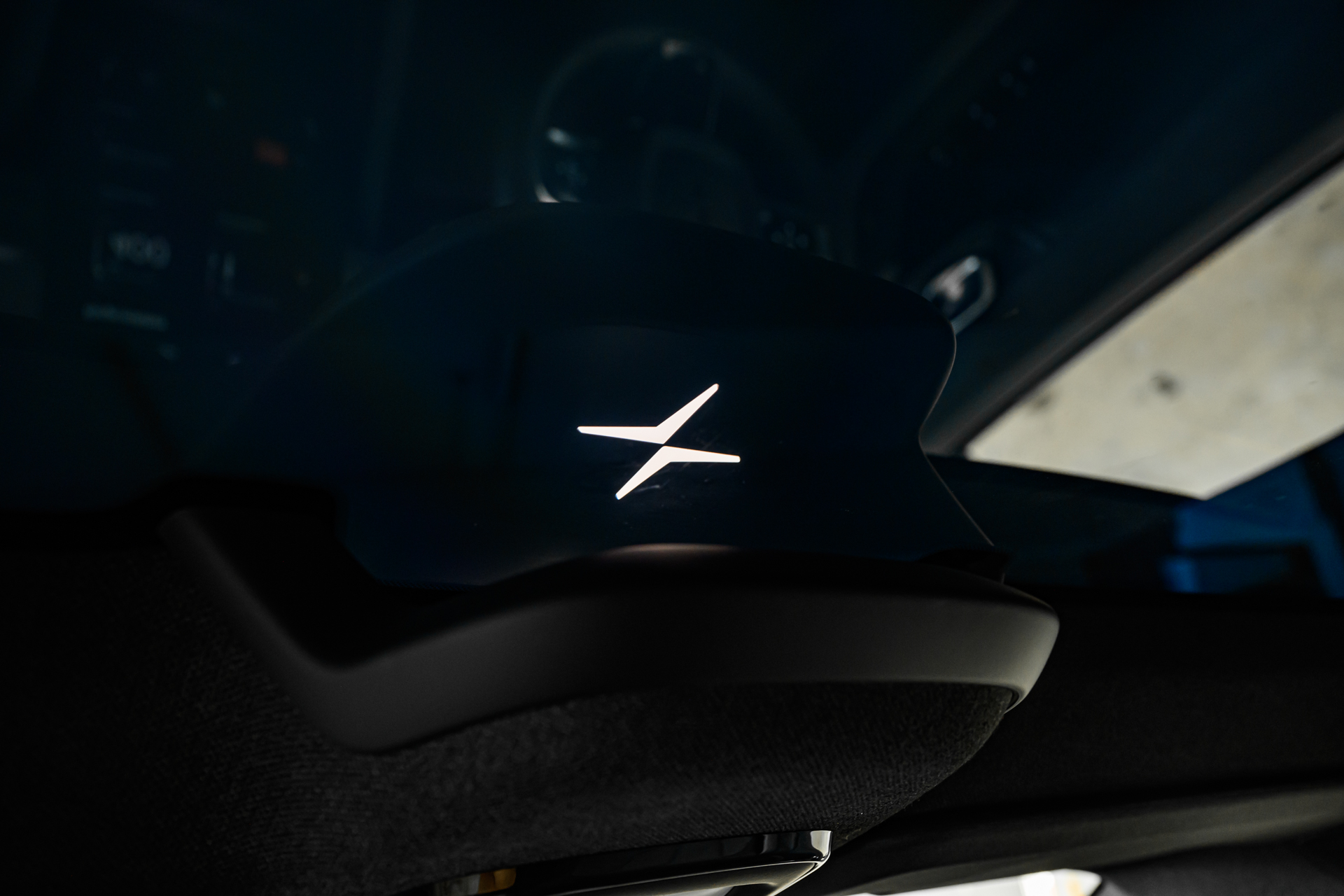
The front seats feature electric adjustments with two memory settings for the driver. They’re easy to quickly position into one’s preferred posture. The steering wheel then falls naturally to hand, being adjustable for reach and rake, and is of a good size to hold.
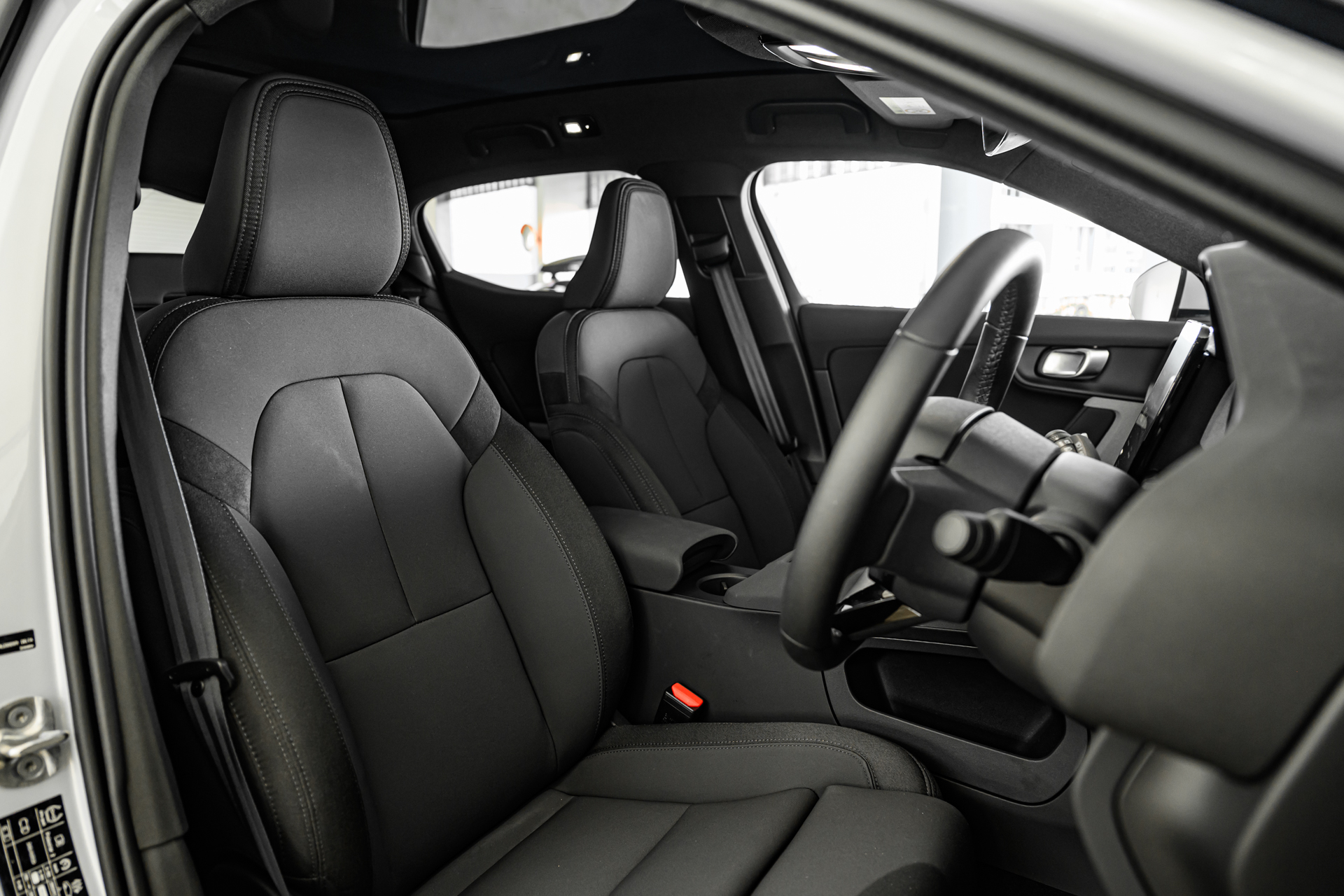
A minimalist 12.3-inch instrument display sits just ahead of the steering wheel and can be configured to just show speed information or a page which replicates one’s map of choice onto this display.
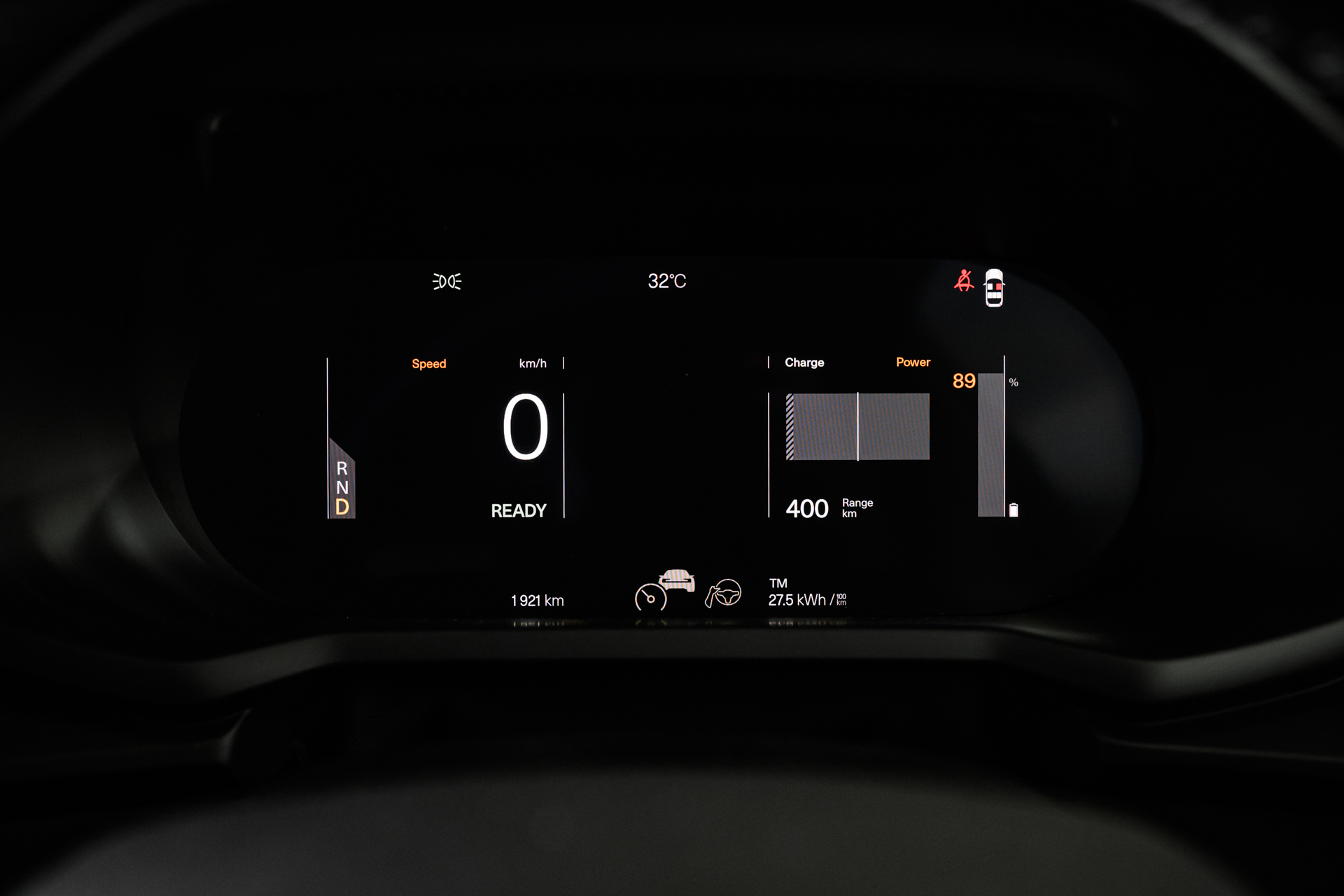
The infotainment screen is 11.2 inches and runs Google’s Android Automotive 12. Think of this as a mobile phone on wheels. Apps like Google Maps and Waze are readily accessible, as is wired Apple CarPlay, with Android Auto to come in the future with regular over-the-air (OTA) updates.
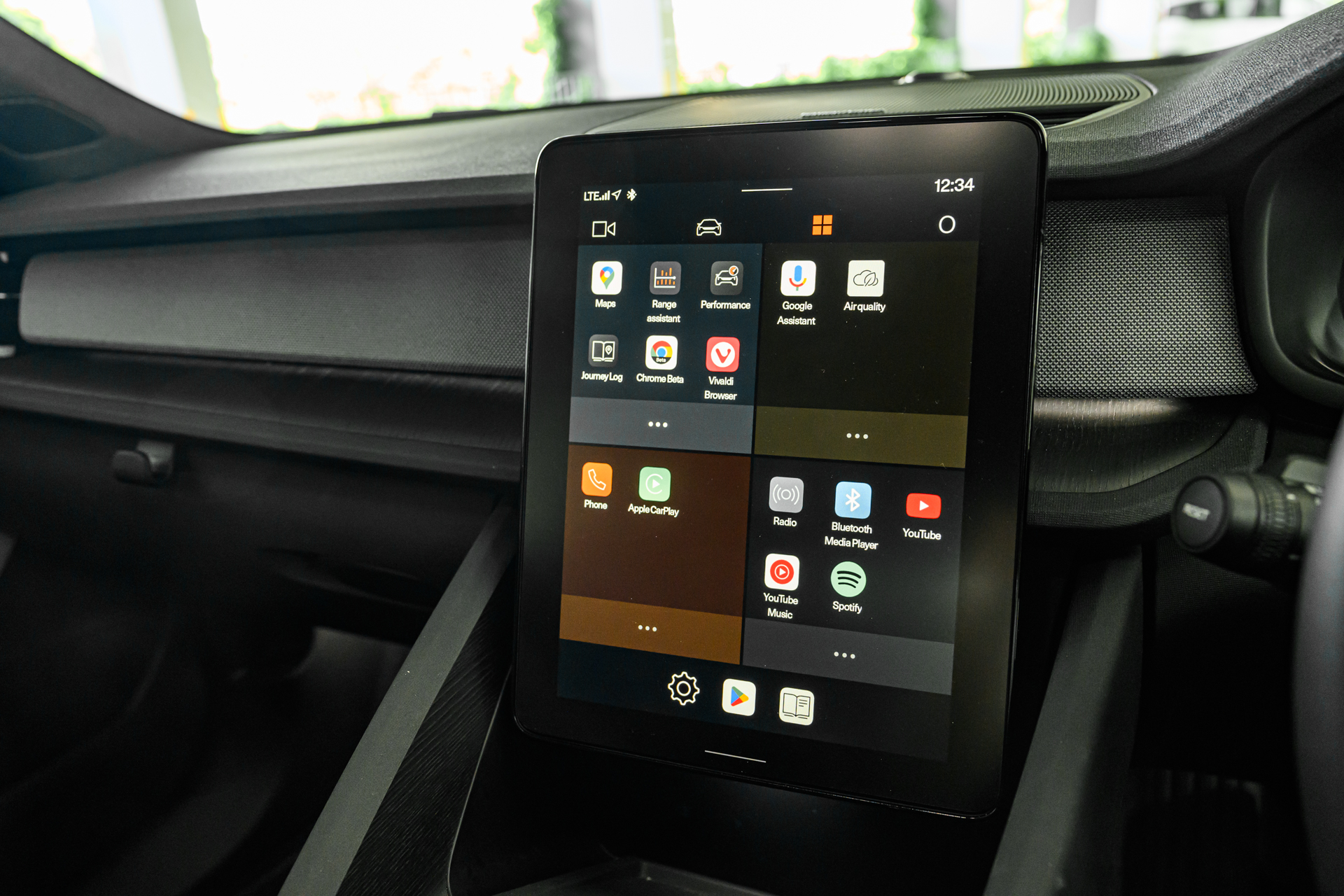
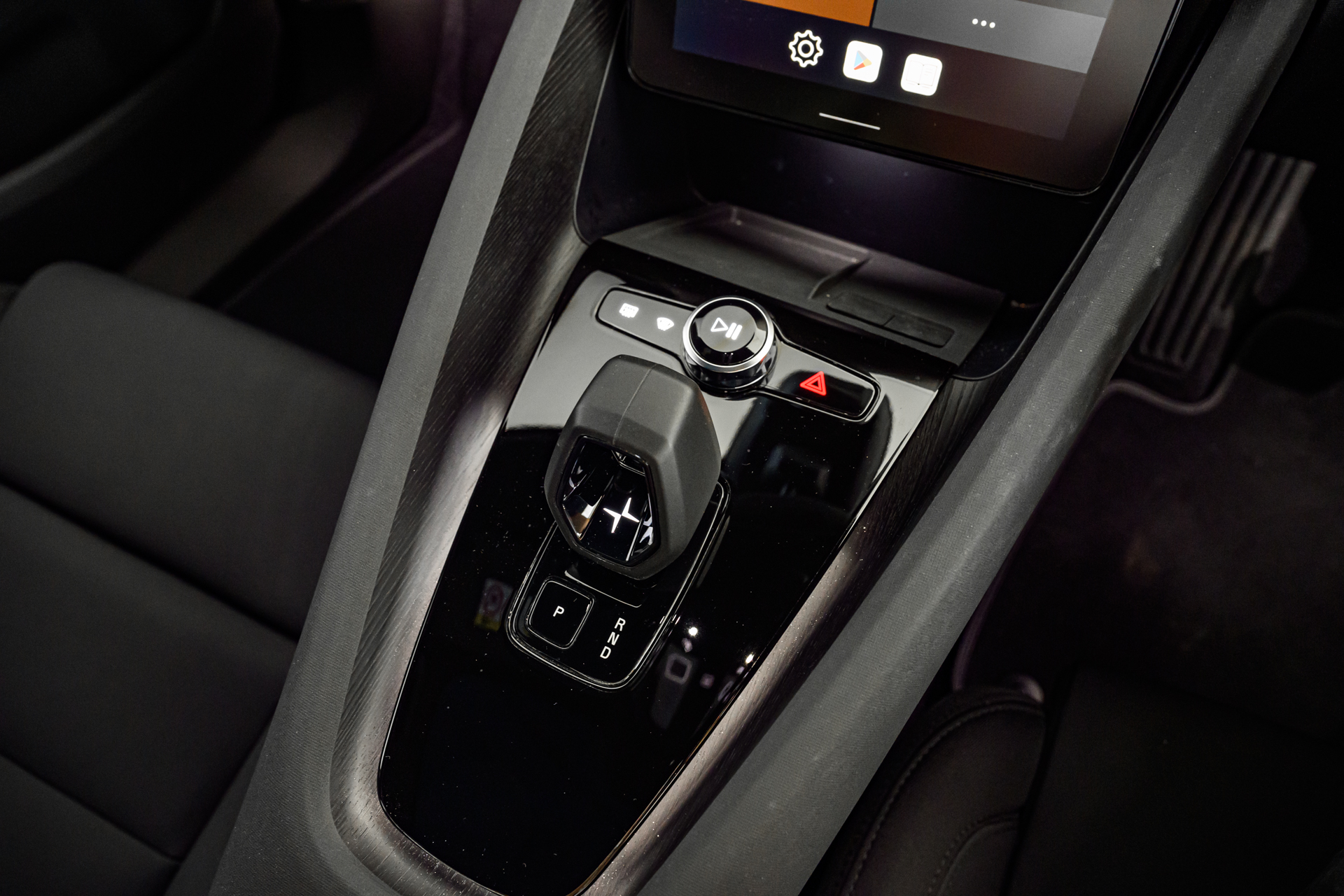
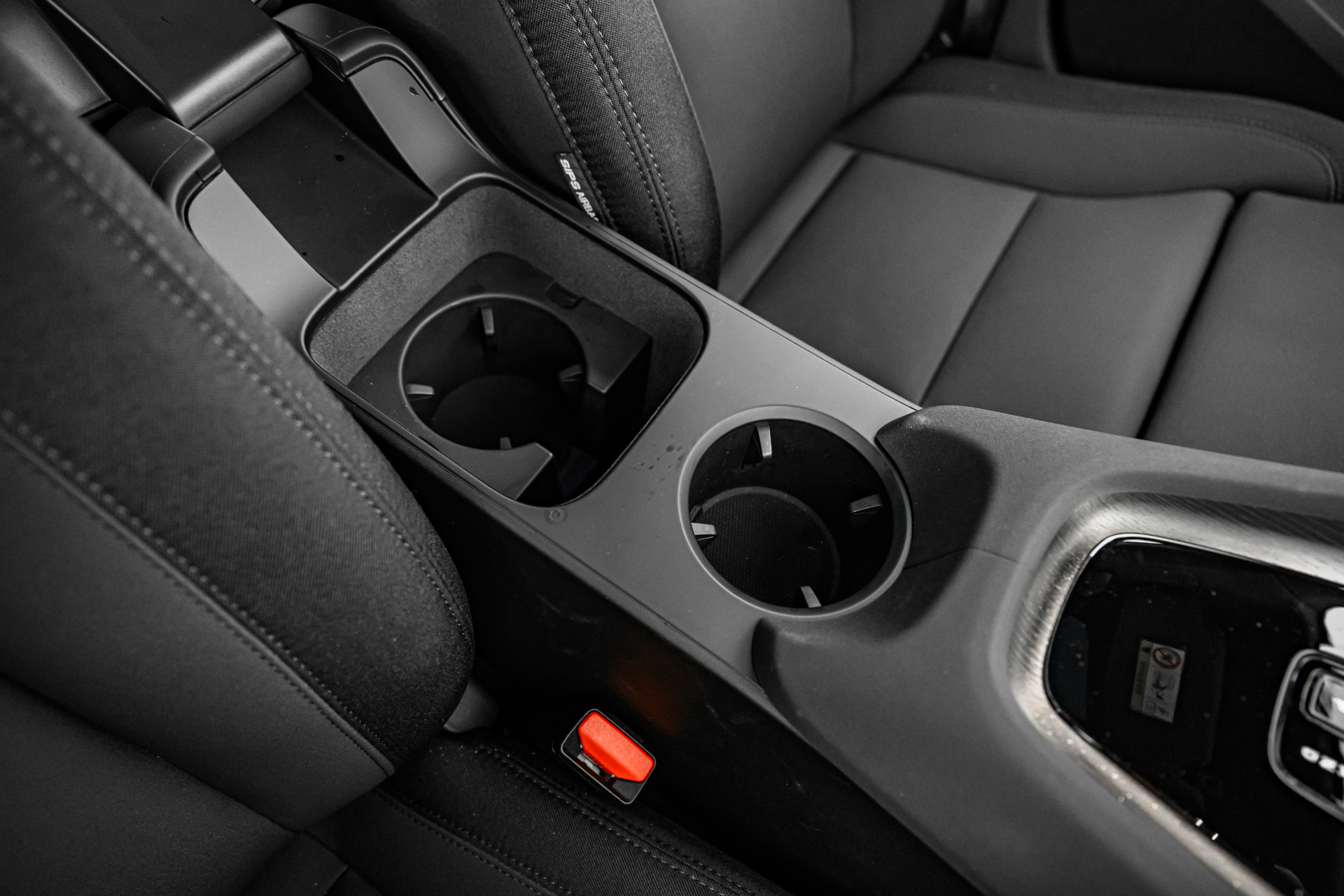
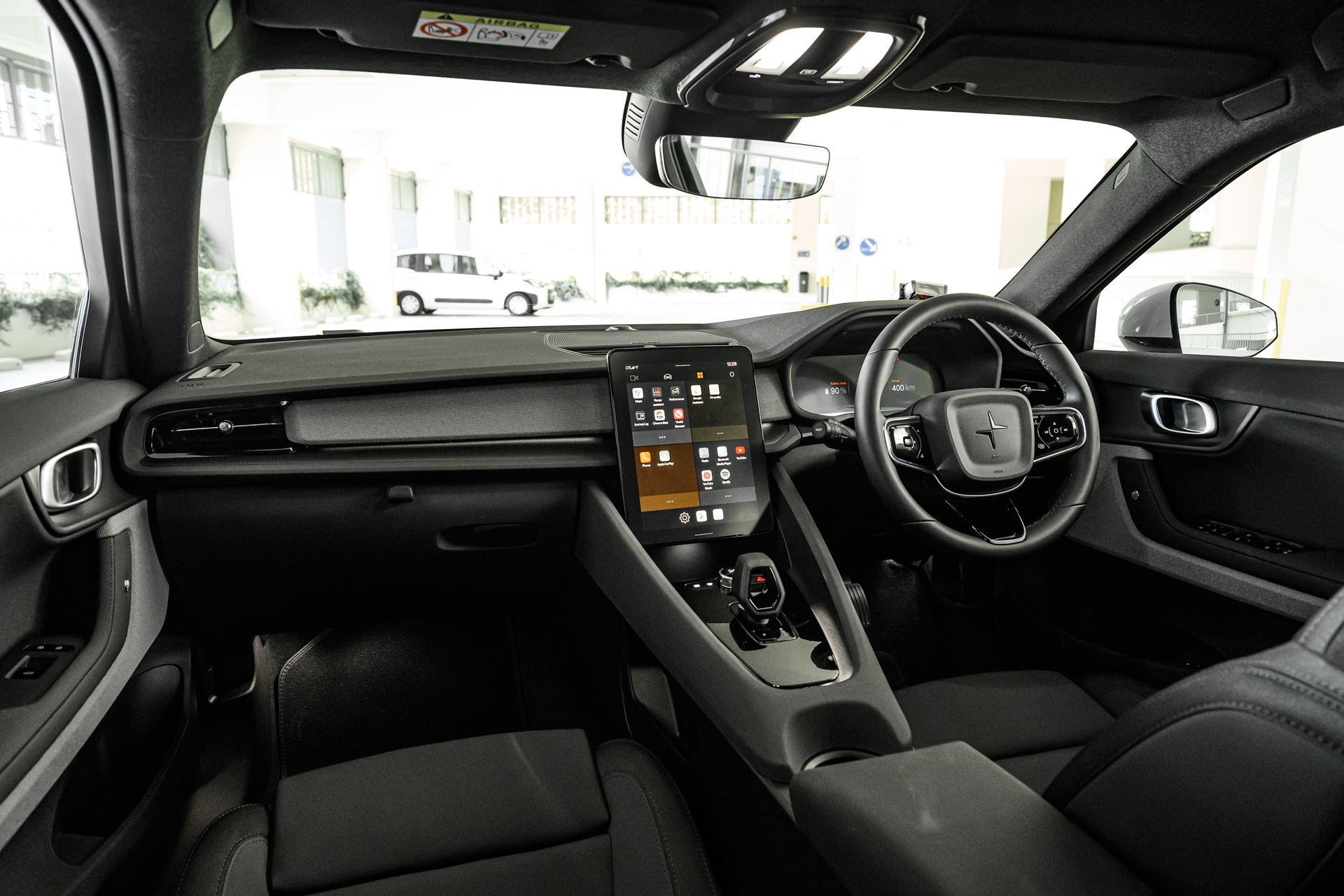
Keep Rollin’…
My chief issue with the previous version was its unnecessarily firm suspension, but this Polestar 2 is sportily firm instead. The result is great handling like before, but with added compliance over bumpy tarmac despite riding on the optional 20-inch rims and tyres. Thank you Polestar!
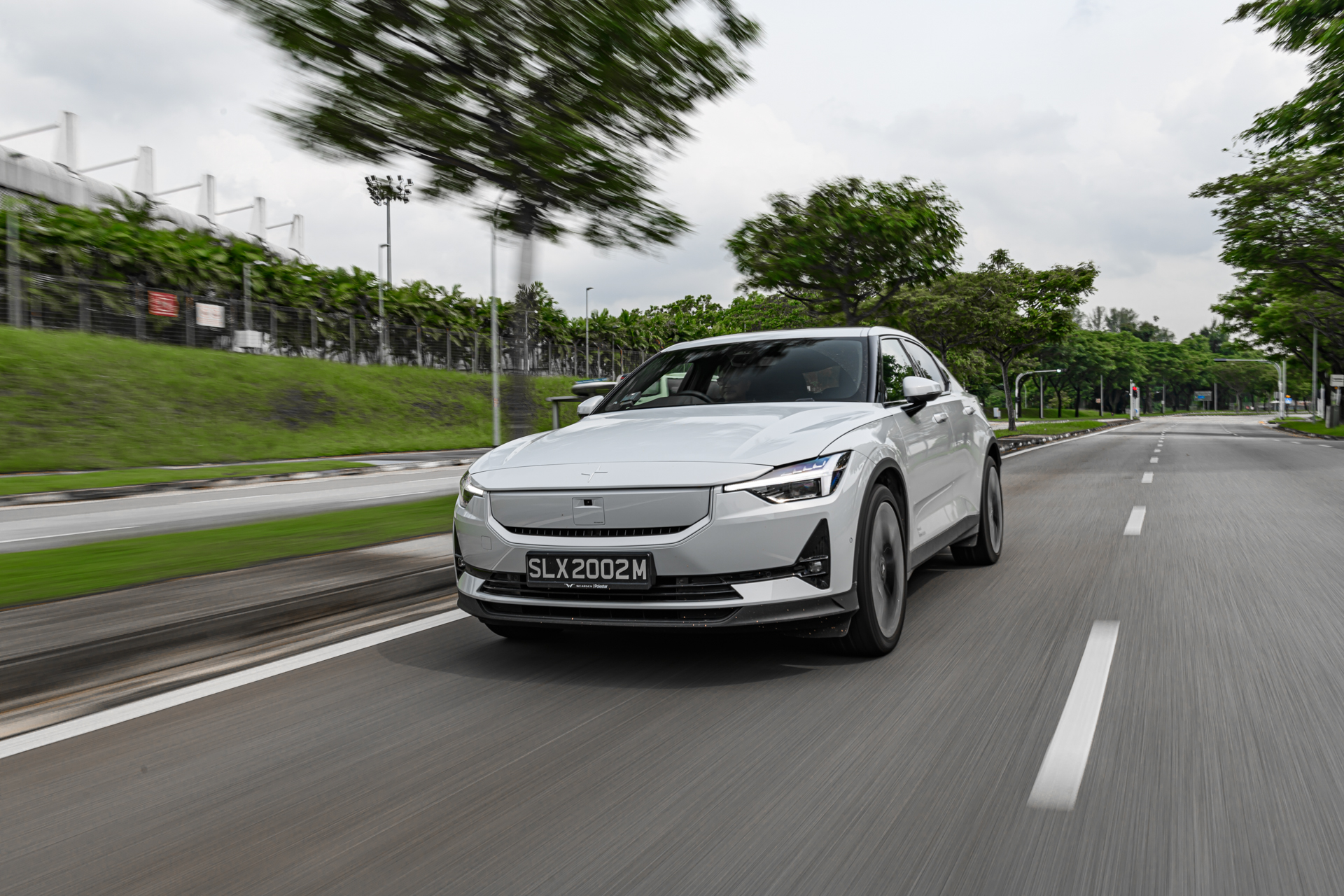
Three modes are available for steering feel, and I simply left it on ‘Light’ for it felt most natural. Placing the EV into a corner is also pretty intuitive, with the nose pointing and darting as commanded from the helm.
The move to rear-wheel drive also means that you can now chuck the Polestar 2 into a corner or bend and throttle-steer out of it. This new playful character elevates this EV to an entertaining machine befitting the Polestar brand name.
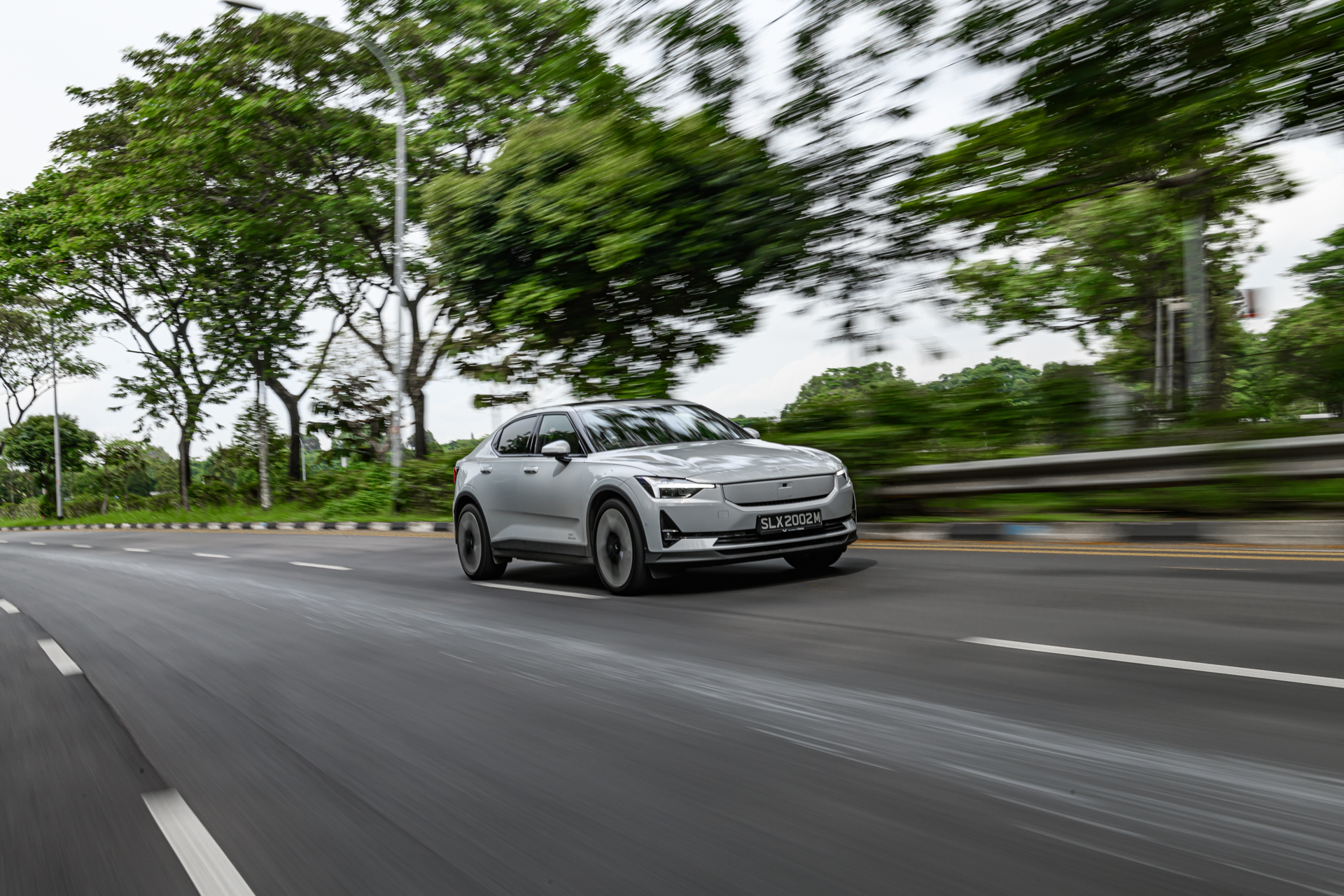
Helping this playful character along are 272hp and 490Nm of torque, which makes the Polestar 2 a true point-and-squirt machine for most intents and purposes. A 0-100km/h time of 6.4 seconds for this Single motor variant isn’t slow by any measure.
Once the fun’s been had, this Polestar 2 settles down into a nice and quiet cruise, with minimal tyre noise except over rougher tarmac. Adaptive cruise control also means the driver can relax more during the daily commute.
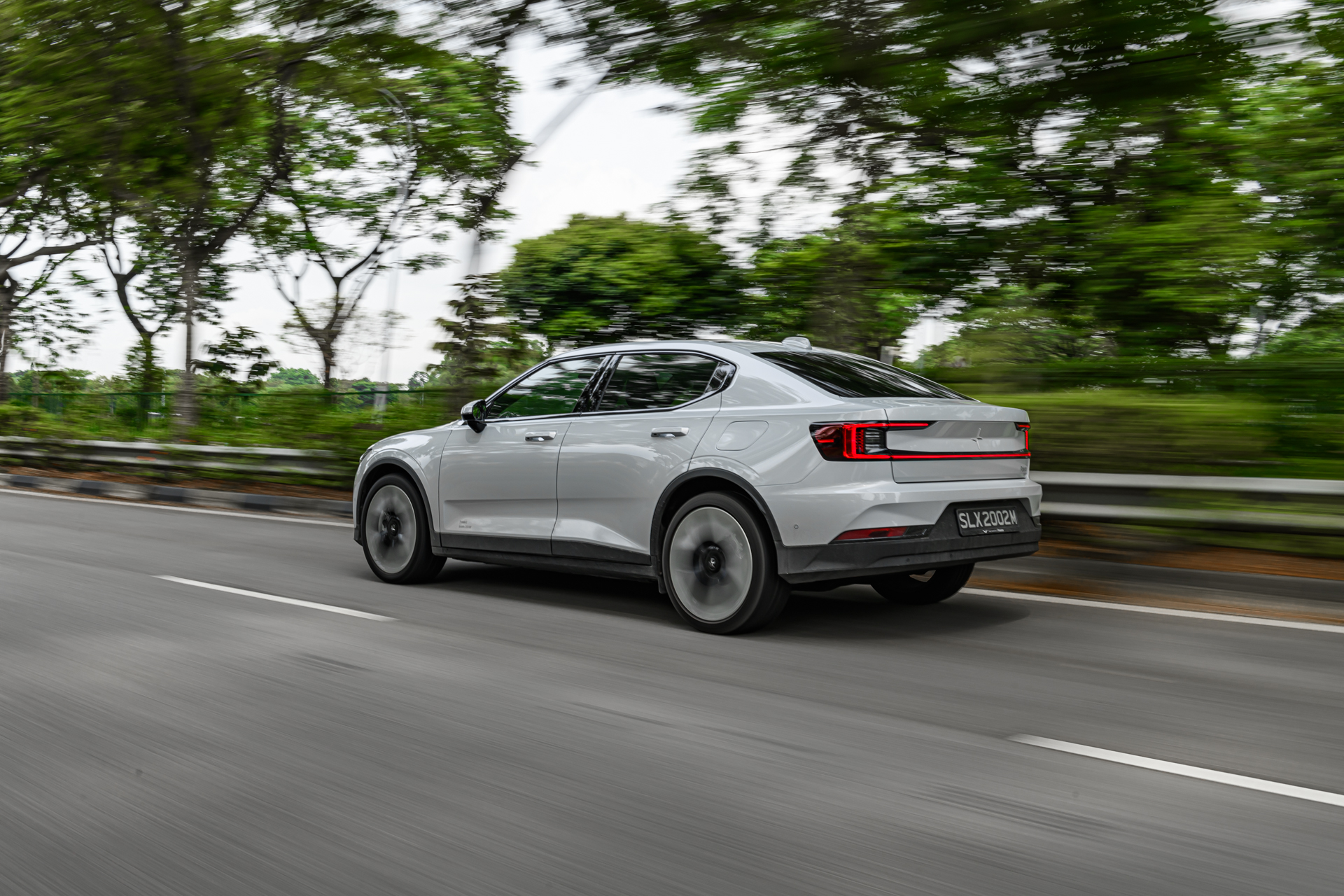
The view out of the EV is pretty good, but one must use the 360-degree reverse camera in the final bits of parking, owing to the sloped bootlid. Also, reverse into a spot slower than usual.

The Rear Collision Warning & Mitigation (RCWM) system is quite sensitive and will stop the Polestar 2 abruptly if a kerb is sensed just underneath the bumper, which can be quite alarming when it happens. Slowing one’s rate of reversing appeared to mitigate this sensitivity.
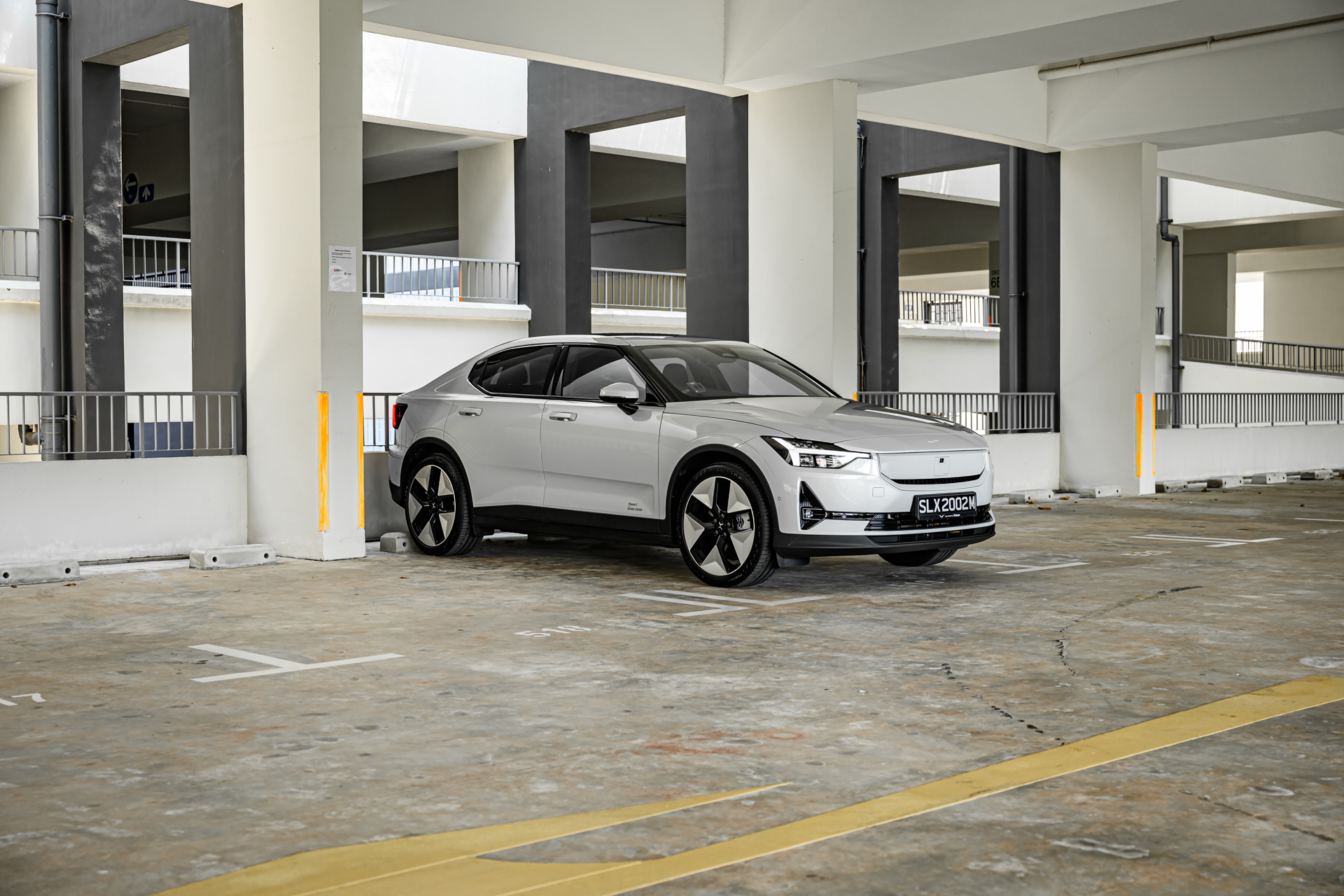
The Not-Secret Secret
Energy efficiency is also pretty good. Polestar quotes WLTP efficiency of 14.8-17.2kWh/100 km or 6.8-5.8km/kWh, and I was able to achieve a weighted and normalised average of 14.59kWh/100km or 6.9km/kWh (nice!) over the pure street and mostly highway test routes.
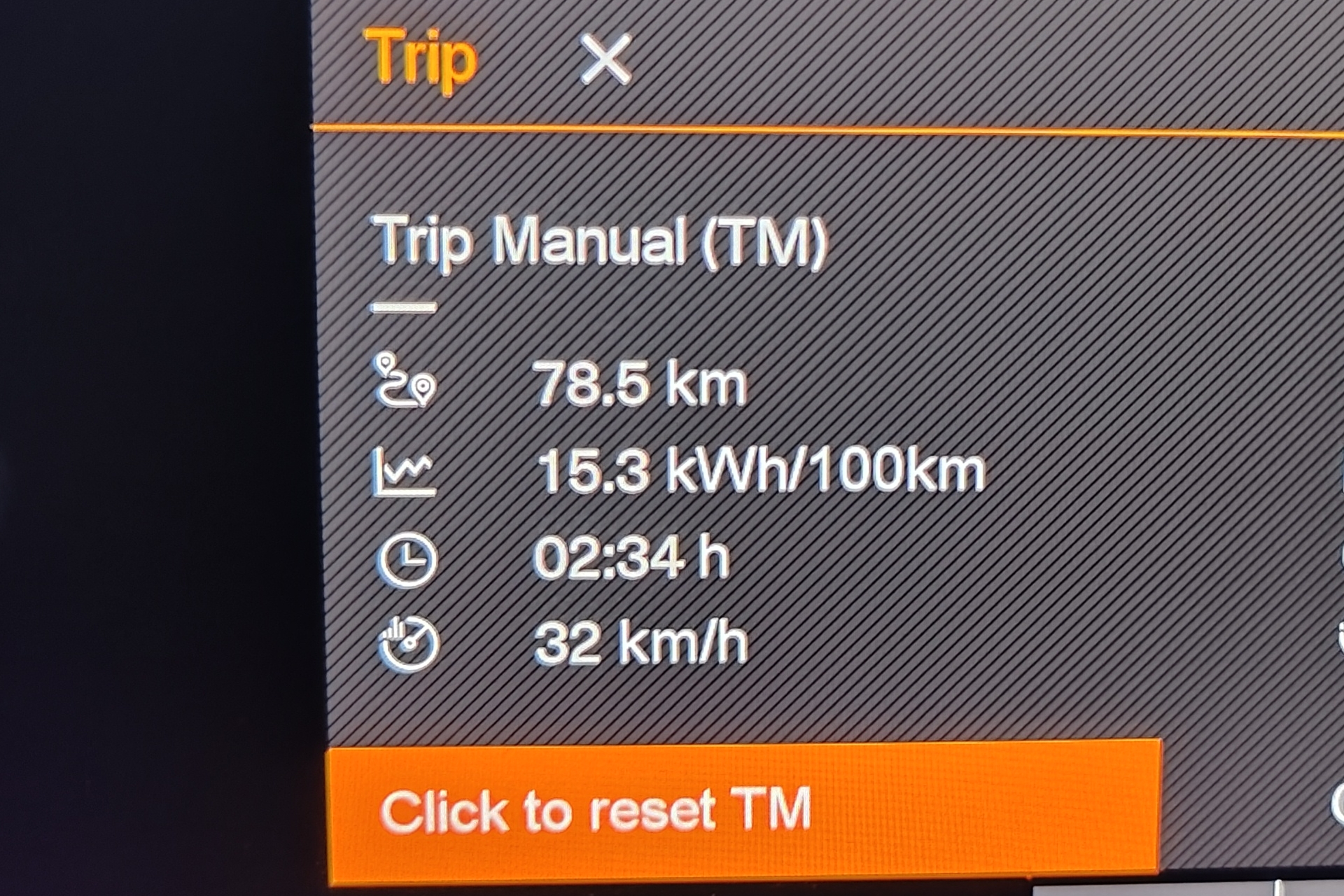
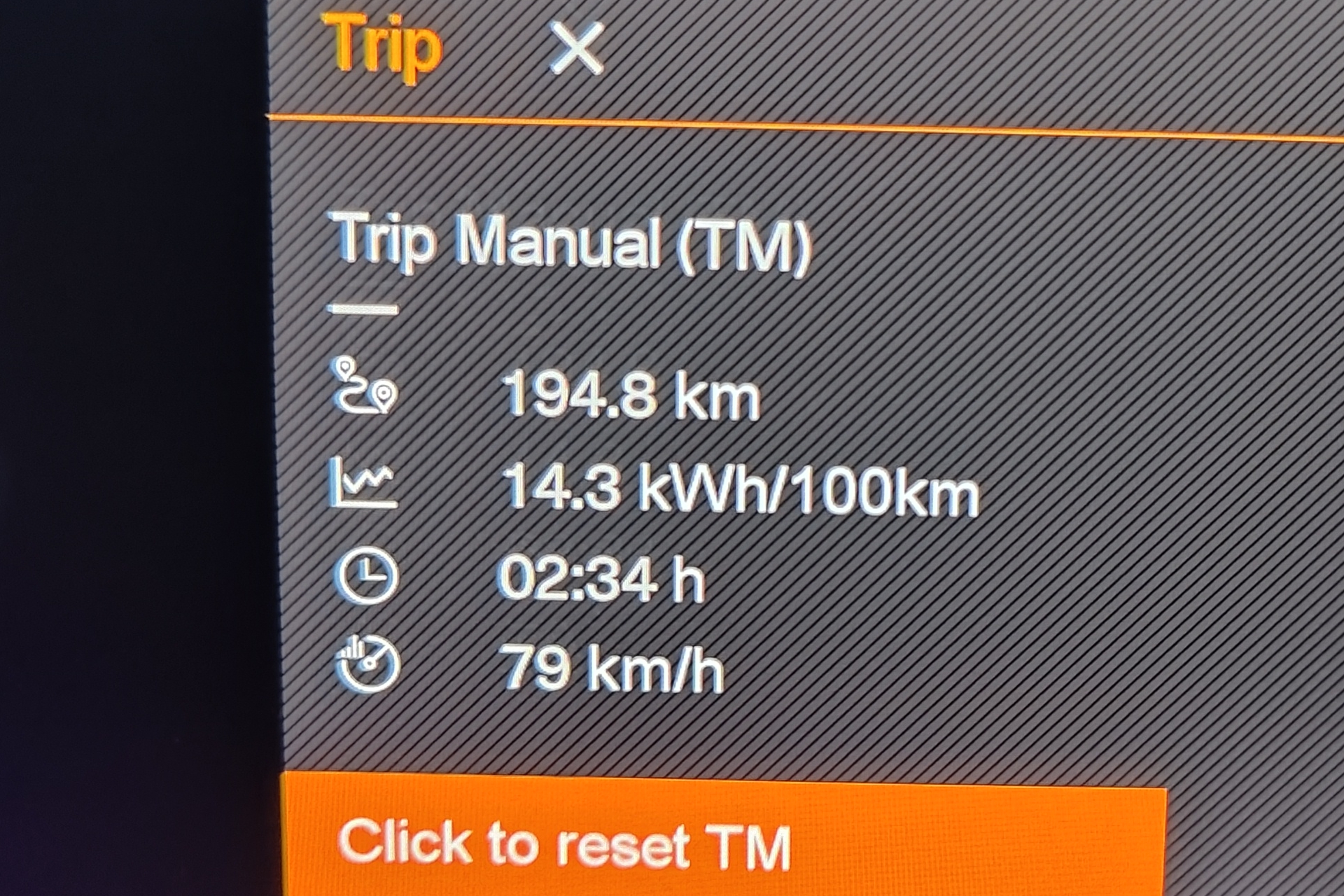
How?
By turning One Pedal Drive a.k.a regenerative braking or regen off.
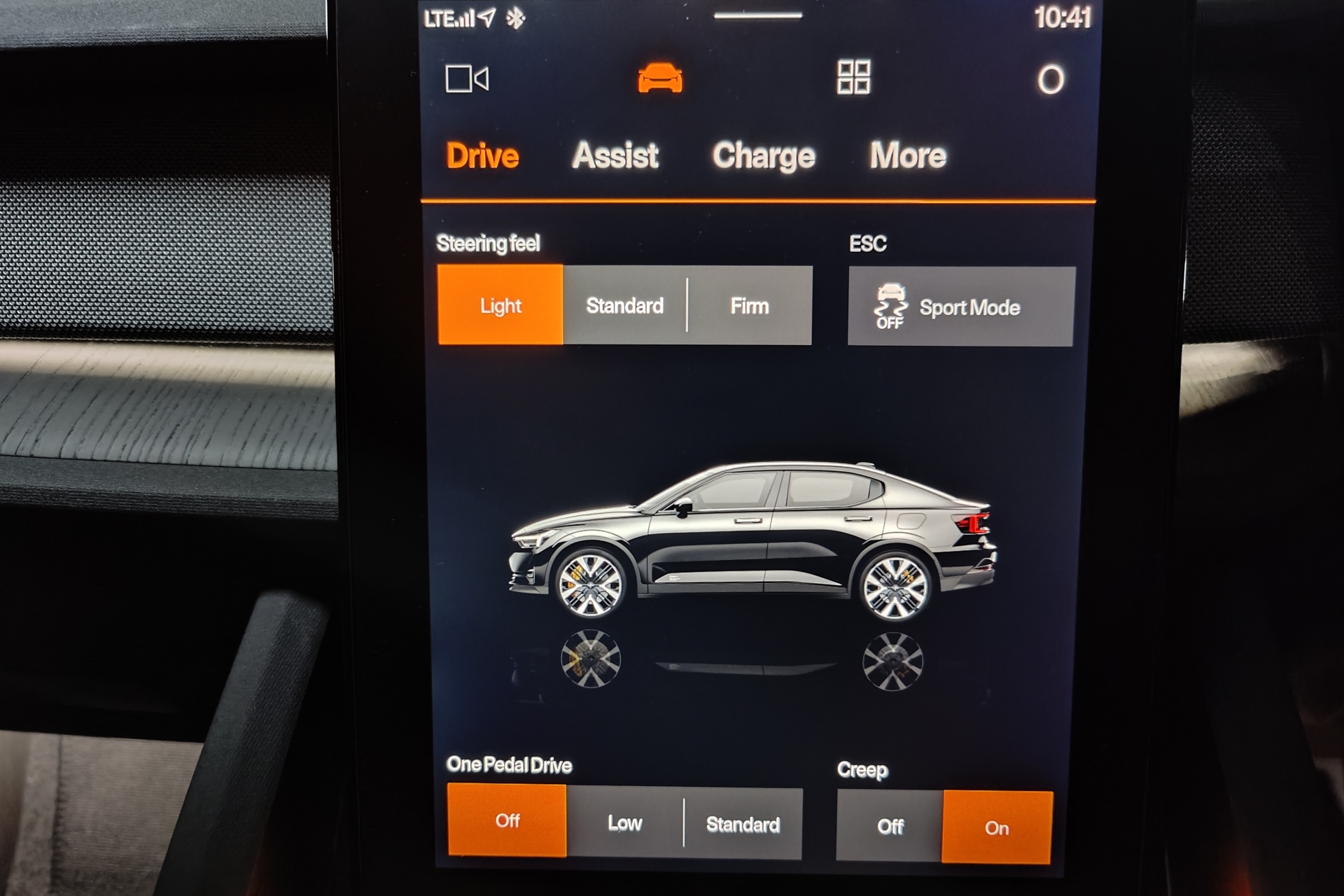
While it may sound counter-intuitive, there’s an actual method to this perceived madness. Sure, in stop-and-go city traffic, turn regen on to your heart’s content and have at it. It’s beneficial there.
However, in all other situations, turn it off and use gravity and momentum to your advantage to coast using little to no energy. Control regen via the brake pedal only when it’s needed.
This is because regen actually robs the vehicle of forward momentum, and although energy is recuperated, more energy needs to be spent getting back up to speed.
For example, with regen turned off, I was able to coast off-throttle for one kilometre after exiting a highway until stopping at a set of traffic lights. That distance was covered for free, with some energy recouped during braking-regen down to a stop.
Turn regen off, anticipate ahead, and hone your momentum-driving skills to eke the most out of the battery pack. Drive smooth, not slow.
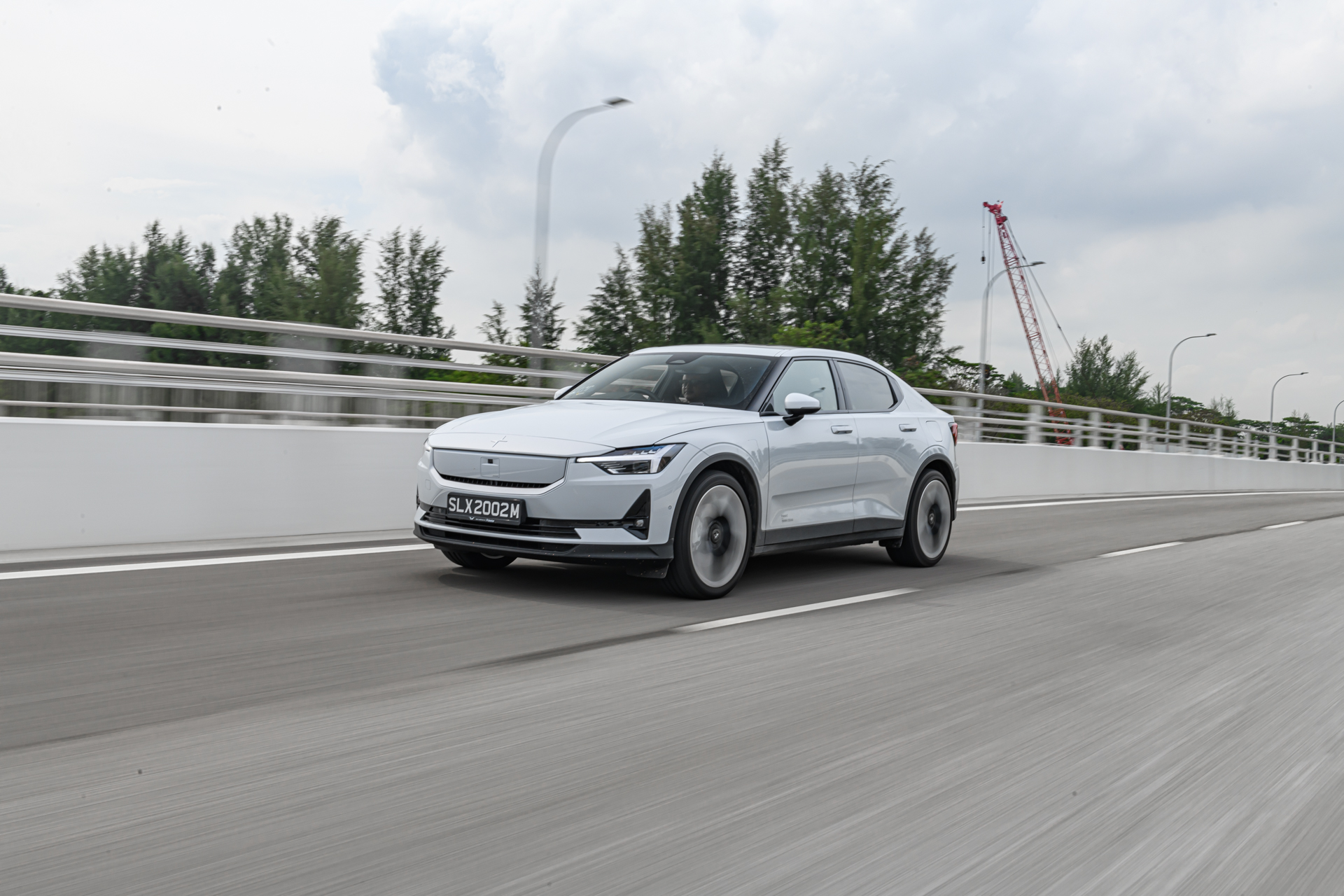
At 69kW (nice again!), the battery pack is good for around 476km of range with my average efficiency above. As usual, your mileage may vary with driving style and use case.
I was able to charge the battery from 30%-80% at a DC 120kW charger in just under 37 minutes, which is about in line with Polestar’s claimed 34 minutes for 10%-80%. 11kW AC charging is said to take seven hours from 0%-100%.

Should You Buy One?
If minimalism is your theme, and sporty driving your thing, then the answer is a resounding ‘yes.’
The Polestar 2 is priced well, and with a five-year transferable vehicle warranty and an eight-year or 160,000km battery warranty (accurate at the time of this article), peace of mind can be had with owning this EV.
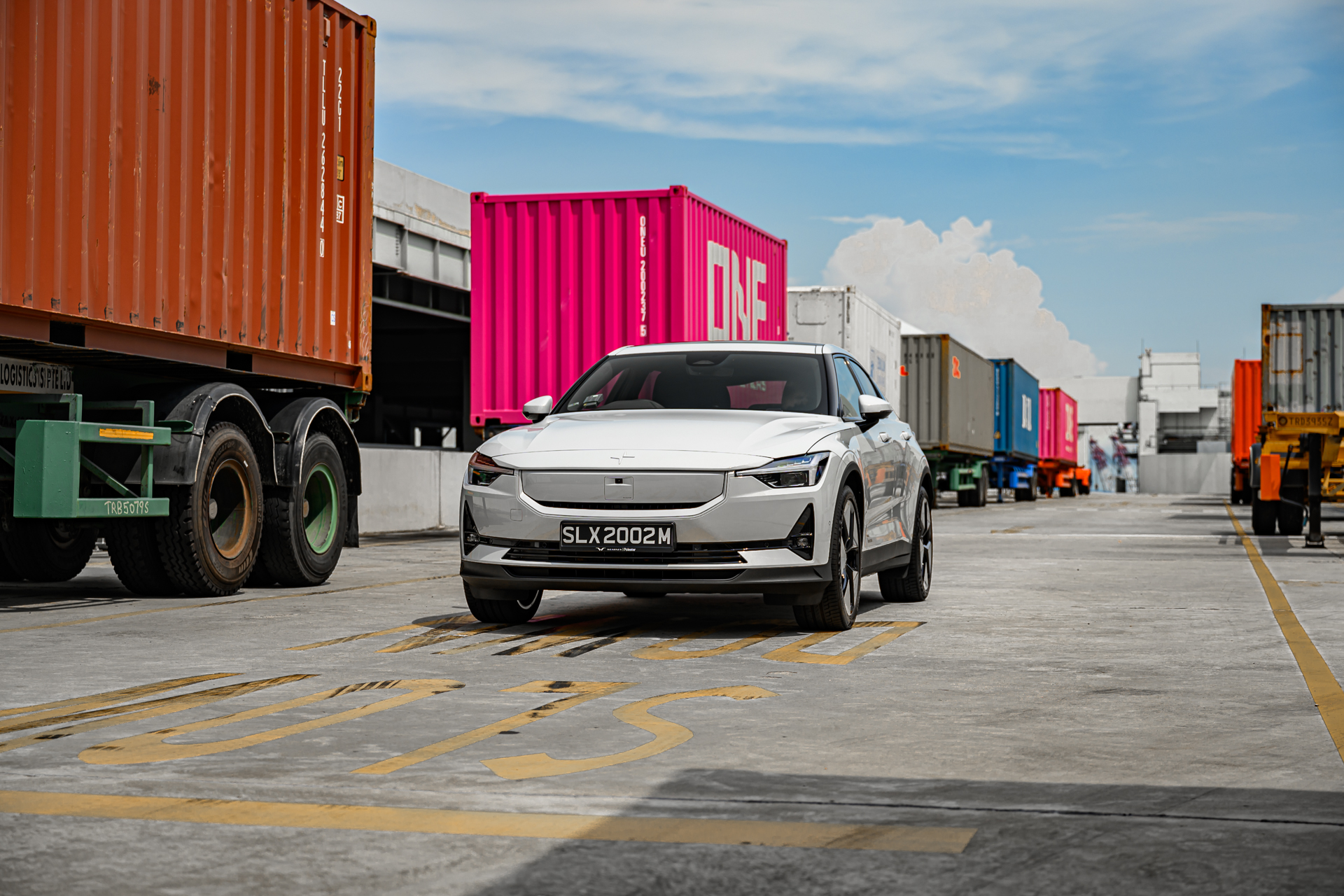
Moreover, despite its clean aesthetic, the Polestar 2 definitely turns heads. Other drivers ahead get out of the way when they see two Thor’s Hammers approaching swiftly in their rearview mirror.
It’s got punch. It’s got style. And it has presence. There is much to like here with the Polestar 2 Standard range Single motor.
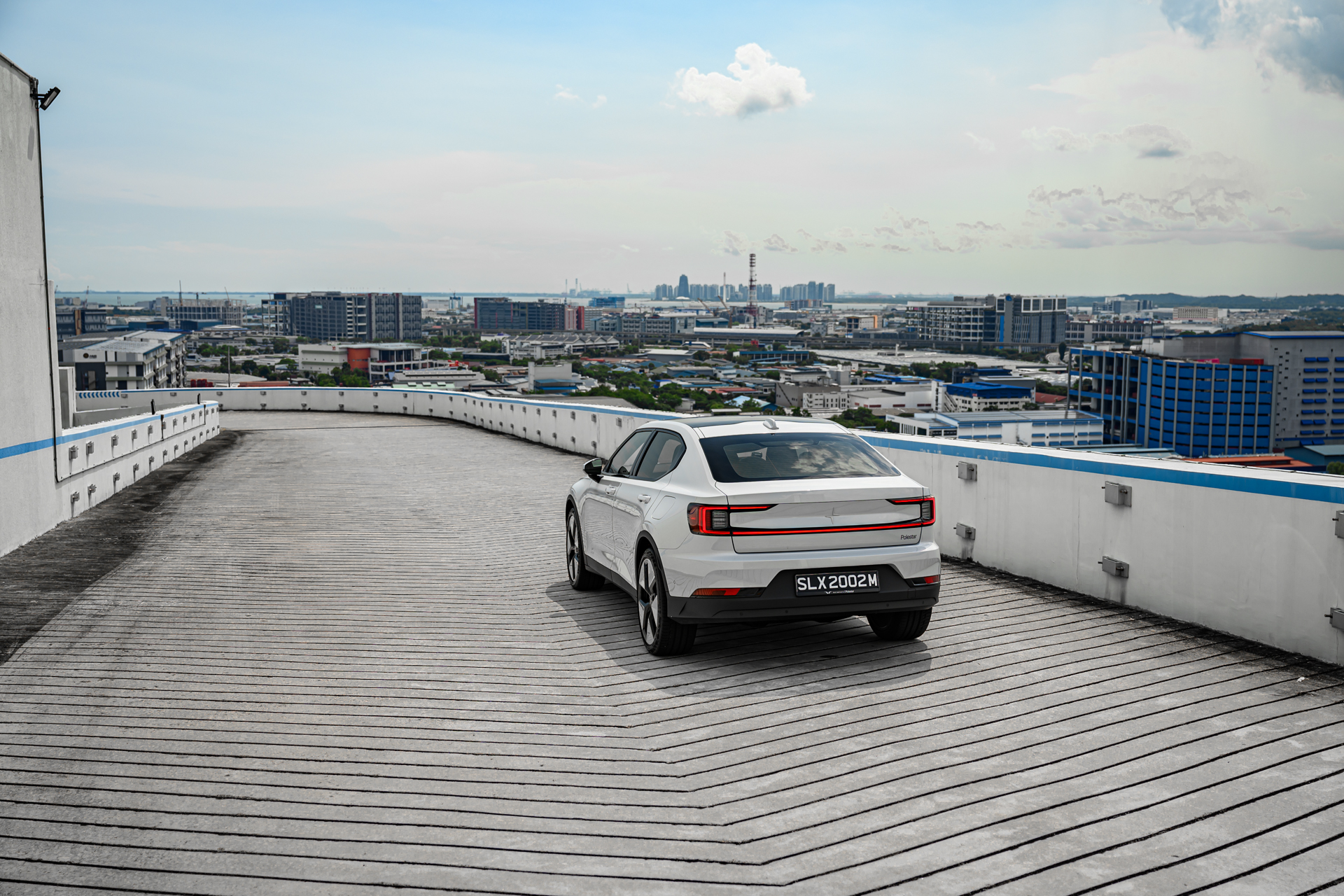
Technical Specifications
Polestar 2 Standard range Single motor
Power: 272hp
Torque: 490Nm
Drive: rear wheels
0-100km/h: 6.4 seconds (claimed)
Top Speed: 205km/h (claimed)
Unladen Weight: 1,940kg
Battery Size: 69kW
Range: up to 546km (claimed)
Energy Economy: 14.8-17.2kWh/100km or 6.8-5.8km/kWh (claimed)
Price: S$262,000 with COE (accurate at the time of this article)
Contact: Polestar Singapore
Photo Credits: Sean Loo (@auto.driven)
Read more automotive news at AutoApp, or check out our latest videos on Ignition Labs TV and on TikTok!

